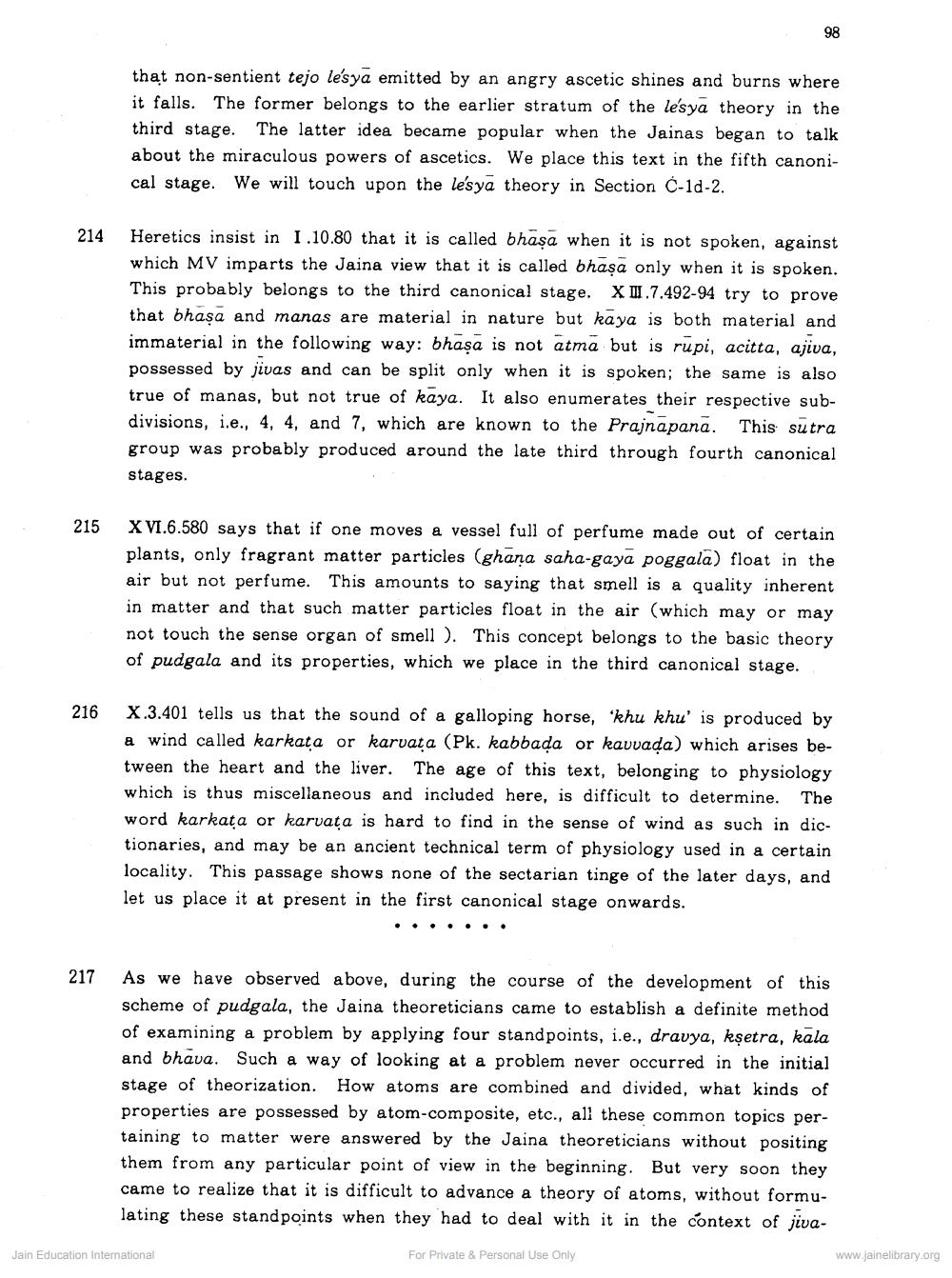________________
98
that non-sentient tejo le'sya emitted by an angry ascetic shines and burns where it falls. The former belongs to the earlier stratum of the le'sya theory in the third stage. The latter idea became popular when the Jainas began to talk about the miraculous powers of ascetics. We place this text in the fifth canonical stage. We will touch upon the le'sya theory in Section C-1d-2.
214
Heretics insist in 1.10.80 that it is called bhasa when it is not spoken, against which MV imparts the Jaina view that it is called bhaşa only when it is spoken. This probably belongs to the third canonical stage. X II.7.492-94 try to prove that bhasa and manas are material in nature but kaya is both material and immaterial in the following way: bhasa is not atma but is rupi, acitta, ajiva, possessed by jivas and can be split only when it is spoken; the same is also true of manas, but not true of kaya. It also enumerates their respective subdivisions, i.e., 4, 4, and 7, which are known to the Prajnapana. This sutra group was probably produced around the late third through fourth canonical stages.
215
XVI.6.580 says that if one moves a vessel full of perfume made out of certain plants, only fragrant matter particles (ghana saha-gaya poggala) float in the air but not perfume. This amounts to saying that smell is a quality inherent in matter and that such matter particles float in the air (which may or may not touch the sense organ of smell ). This concept belongs to the basic theory of pudgala and its properties, which we place in the third canonical stage.
216
X.3.401 tells us that the sound of a galloping horse, 'khu khu' is produced by a wind called karkata or karvata (Pk. kabbada or kavvada) which arises between the heart and the liver. The age of this text, belonging to physiology which is thus miscellaneous and included here, is difficult to determine. The word karkata or karvata is hard to find in the sense of wind as such in dictionaries, and may be an ancient technical term of physiology used in a certain locality. This passage shows none of the sectarian tinge of the later days, and let us place it at present in the first canonical stage onwards.
217
As we have observed above, during the course of the development of this scheme of pudgala, the Jaina theoreticians came to establish a definite method of examining a problem by applying four standpoints, i.e., dravya, kşetra, kala and bhava. Such a way of looking at a problem never occurred in the initial stage of theorization. How atoms are combined and divided, what kinds of properties are possessed by atom-composite, etc., all these common topics pertaining to matter were answered by the Jaina theoreticians without positing them from any particular point of view in the beginning. But very soon they came to realize that it is difficult to advance a theory of atoms, without formulating these standpoints when they had to deal with it in the context of jiva
Jain Education International
For Private & Personal Use Only
www.jainelibrary.org




